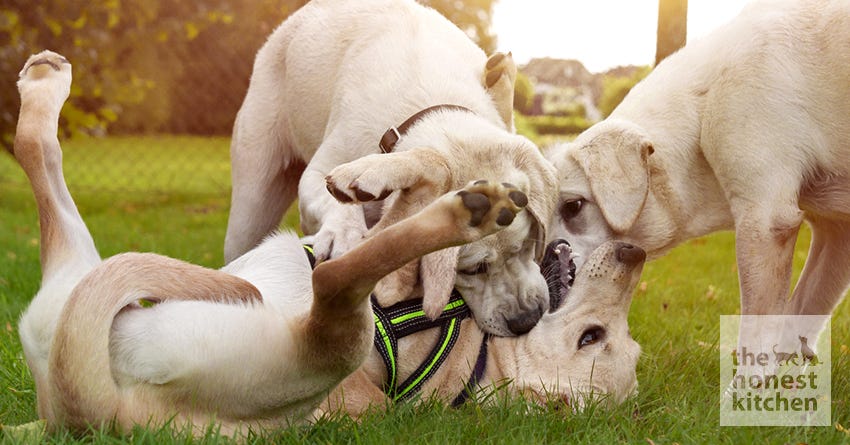How to Stop Aggressive Play in Pets

It can be tempting to roll around on the floor with a new puppy or kitten.
They’re so cute and harmless and their bites don’t really hurt—but roughhousing can lead to some long-lasting behavioral effects down the road. A pet at any age that seems to turn aggressive when playing can do a lot of damage in the wrong environment, so it’s important to curtail that behavior as soon as it starts.Why Do Pets Play Rough?
Nipping, play biting and lunging are all common traits of animal behavior, especially when it comes to having fun. Dogs in particular are known for their entertaining display when roughing around with one another. Sometimes, though, the roughhousing can get a little too aggressive, causing someone to get hurt. Animals play rough because they’re taught to. As puppies and kittens, pets will generally learn the basic rules of engagement from each other when there’s no human involved. They’ll nip and bite but they’ll let each other know it’s too rough with a yelp. That, or their mother will get involved to break things up. With humans, learning to play happens a little differently. As much larger creatures, humans can generally handle more rough forms of play than animals, meaning what might seem like a harsh bite to a puppy is just a nip to a human. However, encouraging the behavior by laughing or continuing to play with your dog will lead him to believe that sort of playing is okay. Other things can lead to aggressiveness during playtime as well:- A pet becoming overexcited
- A dog trying to be dominant
- A pet growing up in a rough environment with other animals or people
 ©istockphoto/KaiDunn
©istockphoto/KaiDunn

